- News
- Reviews
- Bikes
- Components
- Bar tape & grips
- Bottom brackets
- Brake & gear cables
- Brake & STI levers
- Brake pads & spares
- Brakes
- Cassettes & freewheels
- Chains
- Chainsets & chainrings
- Derailleurs - front
- Derailleurs - rear
- Forks
- Gear levers & shifters
- Groupsets
- Handlebars & extensions
- Headsets
- Hubs
- Inner tubes
- Pedals
- Quick releases & skewers
- Saddles
- Seatposts
- Stems
- Wheels
- Tyres
- Tubeless valves
- Accessories
- Accessories - misc
- Computer mounts
- Bags
- Bar ends
- Bike bags & cases
- Bottle cages
- Bottles
- Cameras
- Car racks
- Child seats
- Computers
- Glasses
- GPS units
- Helmets
- Lights - front
- Lights - rear
- Lights - sets
- Locks
- Mirrors
- Mudguards
- Racks
- Pumps & CO2 inflators
- Puncture kits
- Reflectives
- Smart watches
- Stands and racks
- Trailers
- Clothing
- Health, fitness and nutrition
- Tools and workshop
- Miscellaneous
- Buyers Guides
- Features
- Forum
- Recommends
- Podcast
TECH NEWS
Merida 2015: the highlights - Aero goes alu +lots more
Merida’s 2015 lineup includes two new disc-equipped Ride endurance road bikes, aluminium Reacto aero bikes, and completely redesigned cyclocross bikes. On top of that, they have introduced triathlon-specific Warps and lowered prices on many key models.
There’s loads to talk about so we’d better get started.
Ride
Sportive bikes, gran fondo bikes, endurance road bikes… call them whatever you like, Merida’s Ride bikes are road bikes designed to be a bit more comfortable than a standard road bike.
We got a ride on the Merida Ride Pro Team back in February – the bike that Team Lampre-Merida ride over the cobbles – so check out that article for all the tech details.
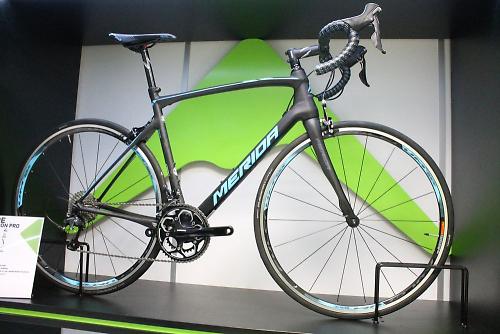
In short, the Ride bikes have a shorter top tube and a longer head tube than the Reactos (see below), for example, for a slightly more upright ride position. That’s a standard approach that every manufacturer takes although Merida don’t go crazy, retaining a geometry that’s still performance-orientated.
Merida also include other features designed to provide flex and absorb vibration, like seatstays that meet the seat tube low down rather than right up by the top tube junction, flattened chainstays and seatstays, and skinny seatposts.
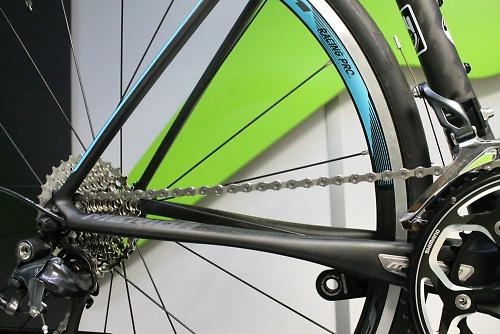
The top-end Ride 5000 is built with flax fibres woven into the carbon fibre frame, the idea being to dampen vibration further, and the Race Sport fork features what Merida call F-Flex technology. Essentially, it’s shaped with two cutouts close to the dropouts that are designed to allow movement and smooth the ride.
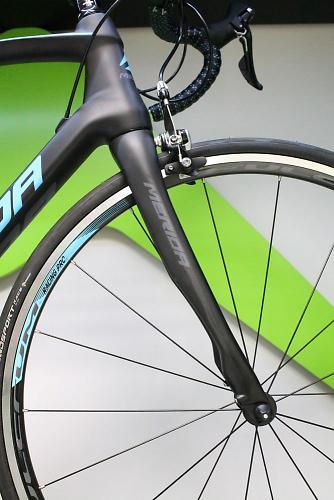
With a Shimano (largely Ultegra) groupset and Fulcrum Racing 7 wheels, the 5000 is priced at £1,800.
The two Carbon Comp Rides feature a lot of the same technology but not the flax damping, and a double chamber fork rather than the F-Flex fork. The Shimano Tiagra-equipped 3000 is priced at £1,250.
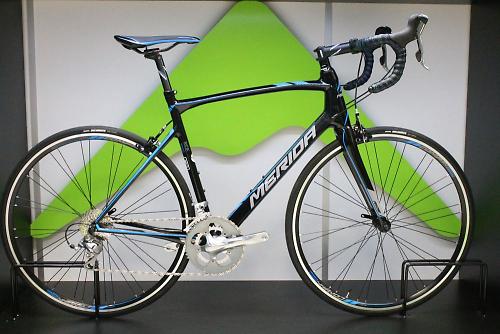
Merida offer a whole bunch of aluminium Rides too. The £999 400 (available in two different colour options: Team Lampre-Merida and white/blue) looks particularly appealing. You get a tapered head tube and a full carbon fork, plus a largely Shimano 105 groupset with Fulcrum Racing Comp wheels.
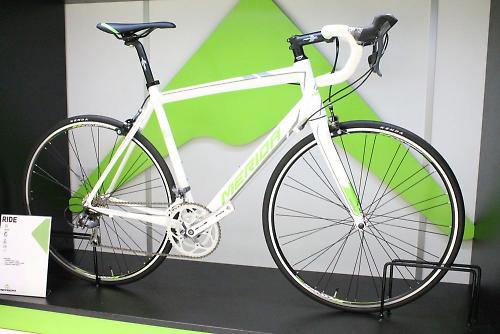
The entry-level Ride is the 88 at £524.99. It gets a 6061 rather than 6066 alloy frame, but it’s double butted and still has a tapered headset and a full carbon fork. The groupset is a bit of a mix with Shimano Claris shifters and mechs.
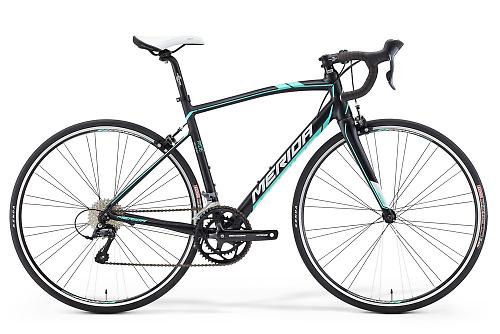
There are three women’s specific Ride models, each built around a 6066 triple-butted frame. The cheapest model is the £599.99 Ride 100 Juliet. It still gets a full carbon fork and Shimano Claris/Sora shifters and mechs.
Of course, you can’t go far without seeing a disc brake road bike these days and Merida duly oblige with two in the Ride range, both of them carbon.
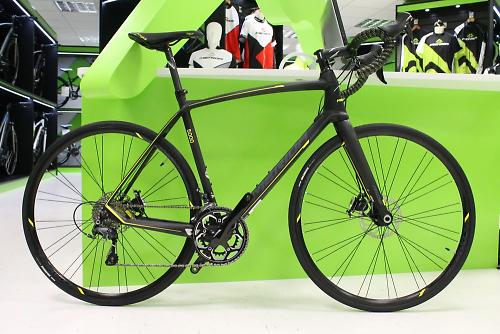
The Ride Disc 5000 comes with a largely Shimano Ultegra groupset and TRP’s HyRd mechanically activated hydraulic disc brakes. It can accommodate tyres up to 28mm although it comes with 25mm Maxxis Dolemites.
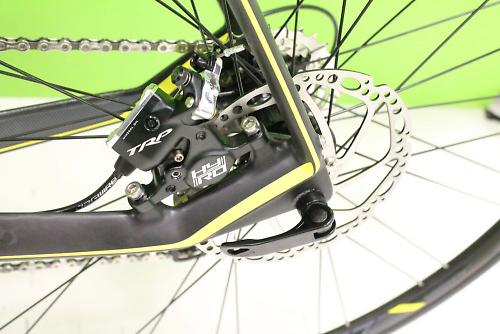
Although Merida use a standard QR at the back, they go for a 15mm through axle up front to handle the braking forces. The Ride Disc 5000 has fittings for mudguards and is priced at £1,900.
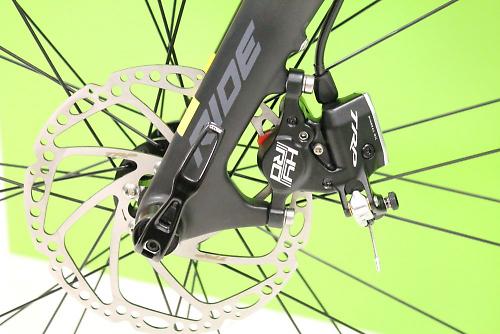
The £1,350 3000 is a largely Shimano Tiagra build with Tektro Miro mechanical disc brakes.
Reacto

The Reacto is the aero road bike in Merida’s range, and it’s the bike that the Team Lampre-Merida professional riders race on the vast majority of the time, having switched from the Scultura SL. Although the Scultura was lighter, Merida reckon that the aero efficiency of the Reacto makes it faster in nearly all situations.
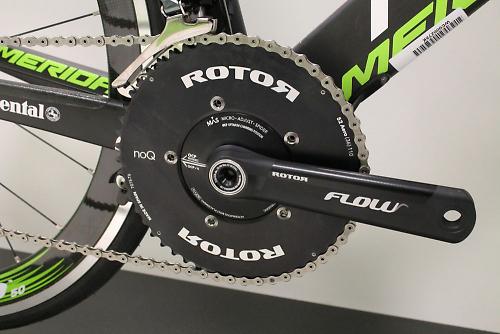
We got the chance to ride the 2014 Reacto Evo Team back in February. Check out that article for a full rundown of all the Reacto’s design features.
In brief, Merida use NACA (National Advisory Committee for Aeronautics) Fastback tube profiles – airfoil profiles with the trailing edge cut off to reduce weight and comply with UCI rules while retaining aerodynamic efficiency.
Other key features include a rear brake that’s hidden behind the bottom bracket – allowing Merida to ditch the brake bridge between the seatstays – an integrated seatpost clamp, and internal cable routing.
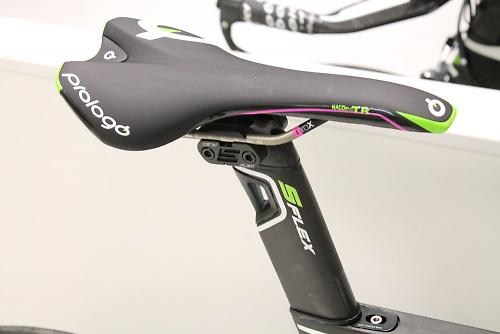
The carbon Reactos also feature Merida’s S-Flex seatpost that, as the name suggests, is designed to flex for more comfort. It comes with a flip-flop head that provides loads of saddle position adjustment – so you can get a good position if you fit clip-on aero bars, for example – and an integrated bracket for a Di2 battery.
If money is no object, the top Reacto in the range is the Team Edition at £7,000. This one comes with a Shimano Dura-Ace Di2 groupset, Fulcrum Red Wind 50 wheels, and a Rotor Flow NoQ chainset.
The Reacto Carbon Pro bikes come out of the same mould and boast all of the same features, including double chamber technology in the fork, where a central reinforcing rib down the centre of each leg is designed to provide greater lateral stiffness.
The difference is in the layup. The Reacto Carbon Pro uses different carbon fibres from the Carbon Team, bringing the price down.
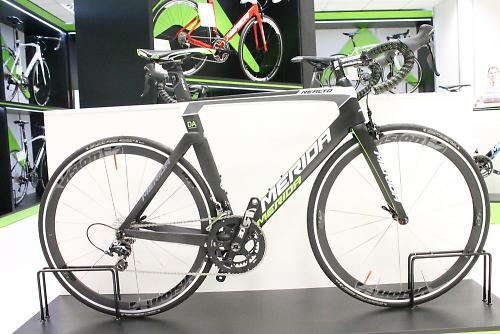
The Shimano Dura-Ace model is priced £3,500 but we think the Reacto 5000 and Reacto 4000 look more exciting in terms of value.
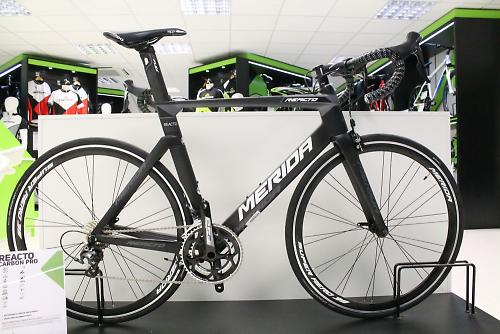
The 5000 is built up with a mainly Shimano Ultegra groupset with Shimano 105 direct mount brakes and an FSA Gossamer Pro chainset. That chainset is 52-36T, by the way, and Merida use this combination across the Reacto lineup. It provides an excellent range of gear options for most people. This bike is £2,000 which, considering the tech and the spec on offer, seems like a good price.
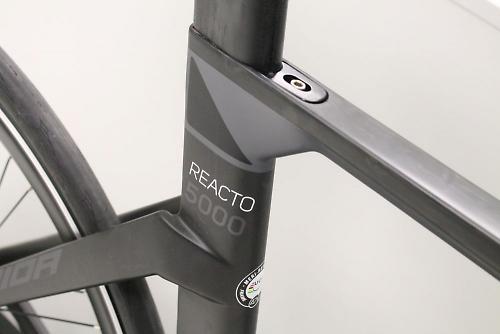
The 4000 is £1,750. You get exactly the same frame and fork, it’s just the spec that changes; it’s Shimano 105 with an FSA Gossamer chainset and direct mount brakes from Tektro. Again, it looks like you’re getting a lot for your money here.

Merida are adding an aluminium Reacto frame to the range for 2015, available in three different complete bike builds.
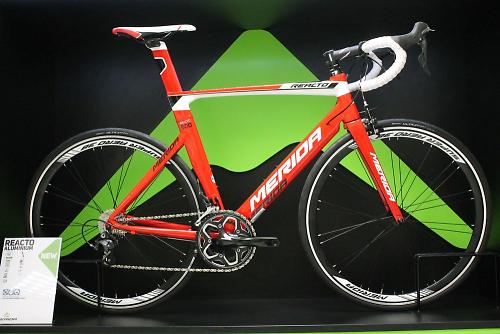
The frame in question is made from hydroformed triple-butted 6066 aluminium with a tapered head tube and an integrated seat clamp like you’ll find on the carbon models. It looks like a high-quality piece of work in a very good grade of alloy. The geometry is the same as that of the carbon version too, although you don’t get the S-Flex seatpost or the double chamber fork.
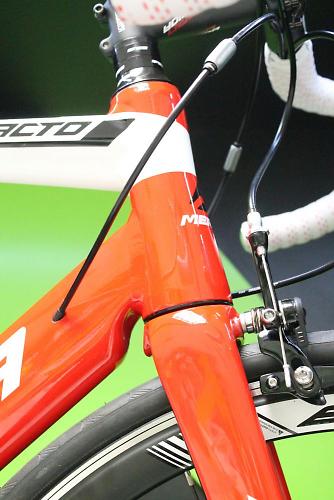
The fork is full carbon and that’s a feature across the road range. Most other brands use cheaper alloy frames and carbon/alu forks at the lower price points.

Of the aluminium Reactos, the top-end model is the £1,300 Shimano Ultegra-equipped 500. £1,150 gets you the 400 in a Shimano 105 build while the Shimano Tiagra 300 nips in at £999.99.

You might have noticed that we’ve not mentioned any SRAM or Campagnolo equipped bikes. That’s the way it is with Merida. They’re Shimano all the way.
Scultura
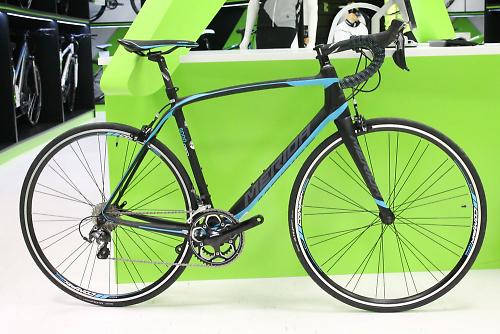
As we mentioned above, Merida firmly believe that an aero road bike will outperform a slightly lighter standard road bike in the vast majority of situations, so their highest specced road bikes are all Reactos now.
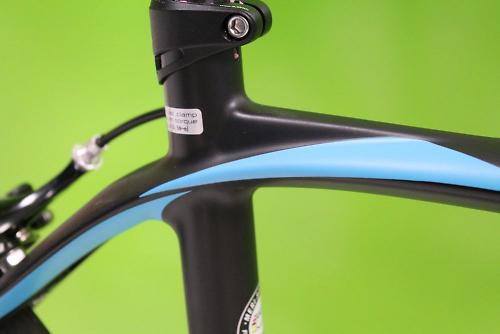
The Scultura remains in the range for 2015 though, with a very slightly modified geometry and a claimed frame weight of 1,050g (54cm).
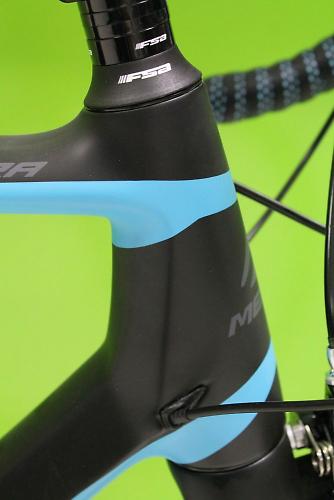
The frame is full carbon right down to the dropouts and it features Merida’s Flex Stays which are designed to provide comfort at the back. The fork has a tapered steerer and the same double chamber technology as that of the carbon Reactos.
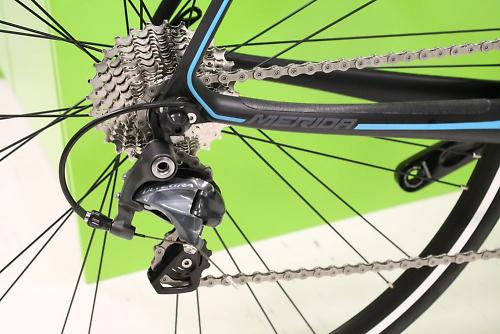
The Scultura 5000 is built up with Shimano Ultegra shifters and mechs and a compact Shimano RS500 chainset. Priced at £1,600, it’s £400 cheaper than last year’s equivalent and looks impressive value for money.
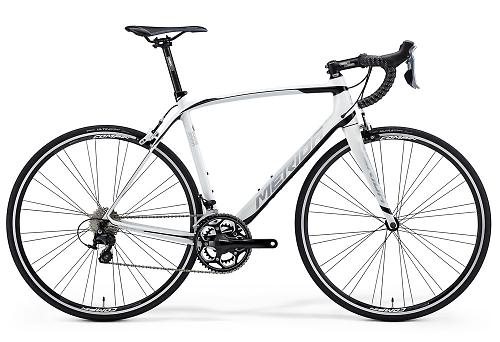
The 4000, which is largely built up with Shimano 105 components with Merida’s own brakes, is £1,350. Again, it’s considerably cheaper than last year’s model and looks an attractive proposition.
Merida offer three aluminum Sculturas. The frame is triple-butted 6066 alloy – so good stuff – with a tapered head tube, smooth welding and internal cable routing.
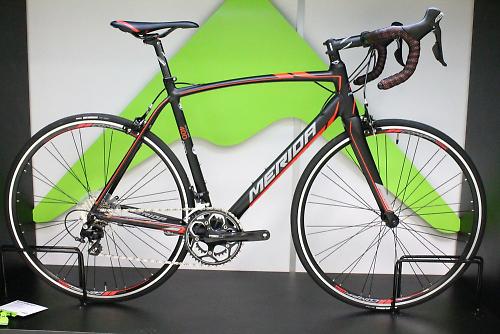
The best-specced alloy model is the £999.99 400 with Shimano 105 shifters and mechs (there are a lot of numbers going on today!)
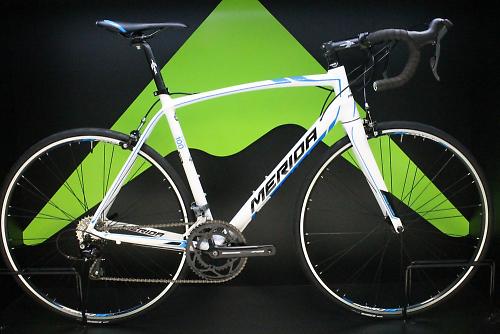
The cheapest of the three, though, looks like a great bike for the cash. The Scultura 100 gets that same triple-butted 6066 frame, a full carbon fork with a tapered steerer, and Shimano Claris/Sora shifters and derailleurs. That’s priced at £599.99.
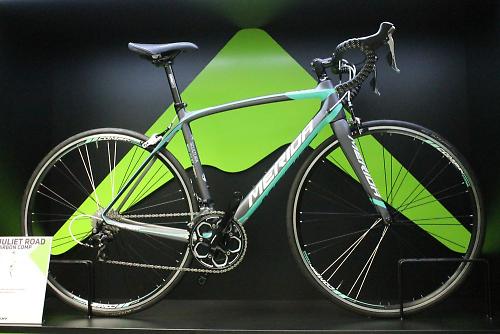
Merida offer a women’s specific model in the Scultura 4000 Juliet. The geometry is the same as the standard version but this bike gets narrower bars and a Juliet Sport saddle.
With a Shimano 105-based build, it’s priced at £1,350.
Cyclocross

Merida offer two cyclocross bikes built around the same completely redesigned triple-butted 6066 frame.
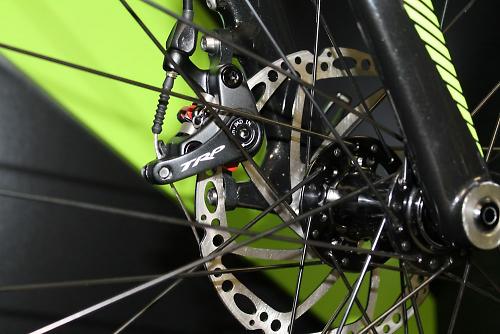
The higher level 500 (pictured, £999.99) gets a full carbon fork that takes a 15mm through axle hub.

This one comes with Shimano 105 shifters and mechs with an FSA Gossamer 46-36 chainset, and Tektro Spyre mechanical disc brakes.

The 300 (£799.99), on the other hand, gets an alloy fork, a Shimano Tiagra-based spec, and Tektro Miro mechanical discs.
Both bikes use Merida Comp rims on Joytech hubs and 35mm Continental Cyclocross Race tyres.
Triathlon
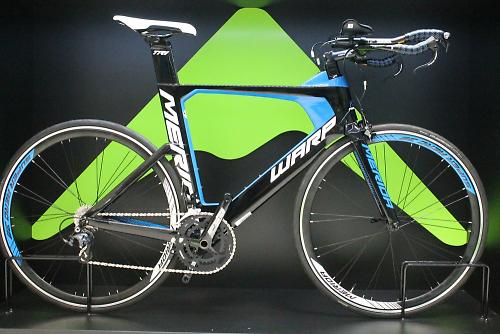
The carbon Warp Tri doesn’t comply with UCI regulations, it’s intended solely for triathlon.
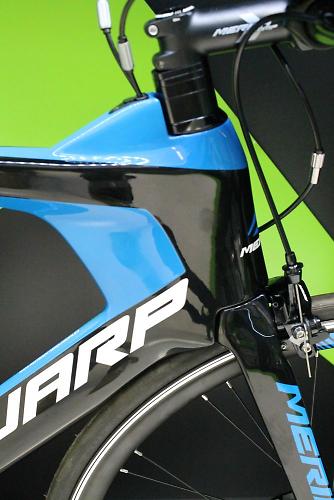
The time trial legal Warp TT has an integrated stem but the Warp Tri doesn’t. It’s designed with a higher front end in mind suitable for the bike leg of a long distance triathlon, so Merida have added a raised section at the front of the top tube to manage the airflow in that area.
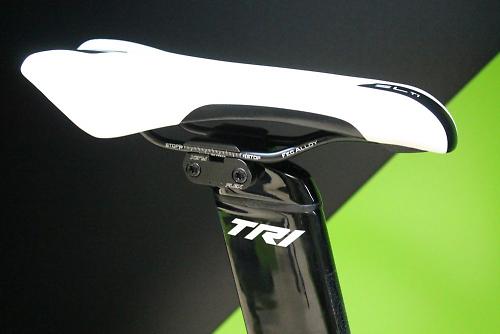
The tubes are built to a truncated NACA airfoil profile (the trailing edges are cut away), and the rear brake is hidden down behind the bottom bracket.
The Warp Tri 5000 (£2,600) comes with Shimano Ultegra mechs and Fulcrum Racing Quattro wheels while the Warp Tri 3000 (pictured, £2,200) has 105/Ultegra mechs and Merida’s own 38mm rims on Formula hubs.
Flat bar road bikes
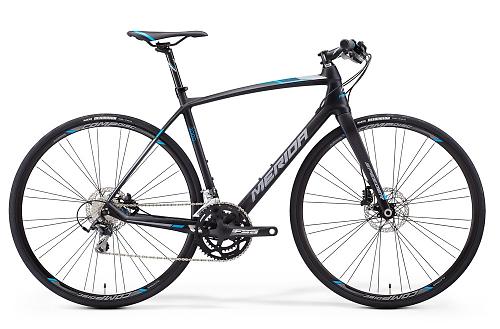
The Speeder 3000 flat bar road bike is a real eyecatcher. The frame is full carbon, as is the fork, and Merida opt for a real mix of components here including Shimano’s M506 hydraulic disc brakes. This one is priced at £1,400.
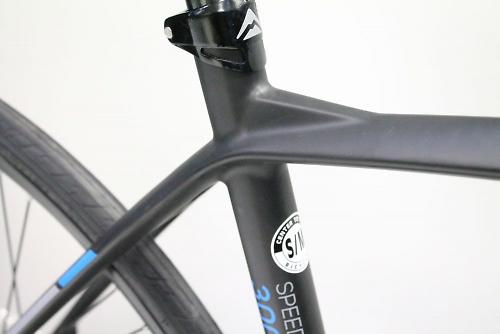
If you don’t want to spend that much, there are plenty of much cheaper alloy Speeders in the range. The new women’s specific Juliet Speeder 300-V, for example, is £699.99.
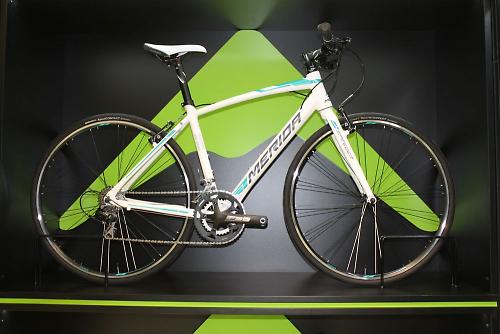
Hybrids

The Crossway 100 (£549) is one of Merida’s best selling bikes, built around a 6061 double-butted frame with a hydroformed down tube that hides the cable routing. You get mounts for a rack, mudguards and a kickstand.
The Suntour NEX fork provides 63mm of travel and you can lock it out for on-road sections while stopping comes courtesy of Tektro Vela hydraulic disc brakes.
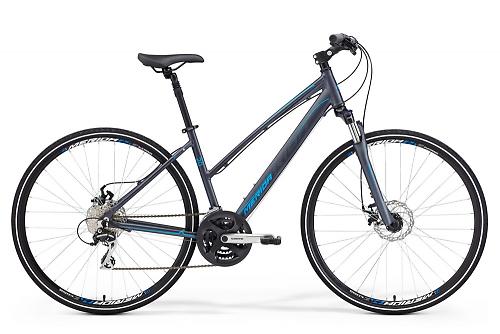
The £399.99 Crossway 20-MD (available in both men’s and women’s versions) gets a new frame for 2014. With a Suntour suspension fork and mostly Shimano groupset components, it looks like a neat package for the money.
Mat has been in cycling media since 1996, on titles including BikeRadar, Total Bike, Total Mountain Bike, What Mountain Bike and Mountain Biking UK, and he has been editor of 220 Triathlon and Cycling Plus. Mat has been road.cc technical editor for over a decade, testing bikes, fettling the latest kit, and trying out the most up-to-the-minute clothing. He has won his category in Ironman UK 70.3 and finished on the podium in both marathons he has run. Mat is a Cambridge graduate who did a post-grad in magazine journalism, and he is a winner of the Cycling Media Award for Specialist Online Writer. Now over 50, he's riding road and gravel bikes most days for fun and fitness rather than training for competitions.
Latest Comments
- Miller 1 hour 43 min ago
I'm reading this as the komoot founder cashing out? Tough on the staff who'll get a redundancy notice and not a payout.
- Rendel Harris 2 hours 9 min ago
You can pick them up for £129 at Cyclestore now with free postage.
- belugabob 2 hours 21 min ago
Is that in the same way as roads encourage speeding?
- Jakrayan 2 hours 22 min ago
A tandem might work if it was specially made so that she was at the front. Realistically, I'd probably enjoy staring at her bum more than she would...
- David9694 4 hours 40 min ago
I certainly don't put every story about every fatal crash I encounter, this pair just got me curious, like why are 90 year olds still driving and...
- Vo2Maxi 5 hours 13 min ago
Over 25 years ago now, I was on the Ideal Travel winter training camp in Majorca....
- chaos 5 hours 22 min ago
Great news for titanium and steel owners like me. My metal rim bikes roll on. Sadly, my venture into carbon territory is a different story. Anyway,...
- Sredlums 6 hours 4 min ago
I honestly can not yet get my head around how this thing is supposed to work. What I do know is that it does not have the chain on each side,...
- Bmblbzzz 6 hours 45 min ago
And it's worth remembering it's not just Park St – it's from Vic Rooms down to College Green. https://www.bristol247.com/news-and-features/news...
- David9694 8 hours 32 min ago
Driver taken to hospital after flipped car shut road near Barnstaple...
































































































Add new comment
2 comments
Shame they're Shimano only. The Reactos look incredible though.
I will volunteer to test the Merida Cyclocross bike.
Because i'm very kind